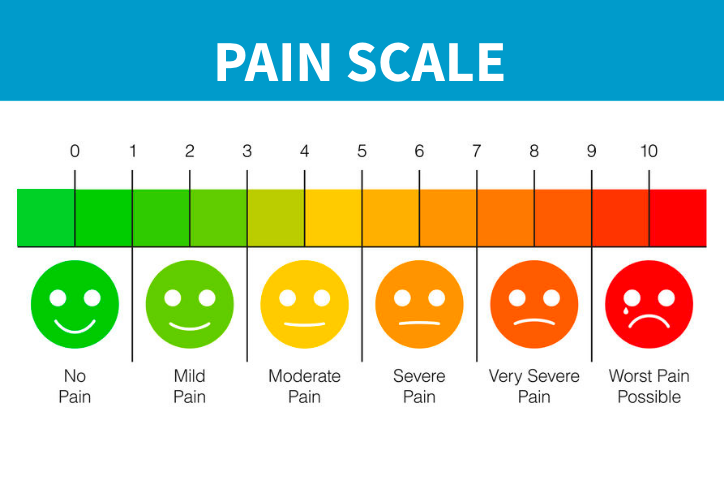
Gillie.AI for Nursing Homes
Artificial intelligence transforms nursing into knowledge work
Artificial intelligence shows changes in customers’ health and well-being
Artificial intelligence monitors the condition of residents in nursing home and helps care workers anticipate changes in the condition.
Artificial intelligence can detect weak signals of changes in the customer’s condition and use them to predict upcoming deviations. Early intervention in deviations improves customer well-being and reduces the need for care.
Benefits

Helps to recognize the customers who need help at any given time.

Helps to improve the quality of life of residents.

An up-to-date and objective way to compare care units.

Increase the satisfaction of seniors and family members with the assisted living.

Using AI, we analyse the customer’s wellbeing using patient data, measuring results, and care notes.

Alerts to any deviations in customer’s wellbeing.

Our virtual carer can learn what is normal for a patient in a matter of 2-3 weeks. AI does not alert of any irrelevant changes.

Our AI orders clients by the critical nature of their care. This is viewed in the order of the client’s pain or depression severity, for example.

Our AI assesses the quality of life of your clients and predicts if the existing quality could be improved.

An up-to-date and objective way to compare care teams.

We can provide a summary of team customer deviations and a report how carers responded.
What the solution is for?
Nursing home clients.
About 0.5-1% of the population.
Nursing home customers are no longer able to live in their own homes. The solution predicts changes in clients’ physical, cognitive and social abilities.
Solution improves customer’s quality of life and speeds up detection of functional ability and wellbeing abnormalities.
Nursing home data has been analyzed with artificial intelligence in a few pilot projects, but competing solutions for widespread production use are not yet available.
Different methods and standards are used to monitor customer well-being in different countries. These include interRAI, RAVA, Omaha Systems and IFSIII, among others. However, the standards are very close to each other and the differences are mainly related to the evaluation process and frequency. The solution is suitable for use with all these standards.
The decision to deploy the solution is made by a care unit, which can be, for example, a municipality, a federation of municipalities, a district or a company providing care services.
The solution does not have a CE mark (2017/745/EU). It is intended for use by a professional to retrieve information from a large database using artificial intelligence. The application is not used for the treatment or diagnosis of diseases.
It is a cloud-based healthcare artificial intelligence platform that integrates with existing healthcare and nursing information systems. The solution collects user-generated free text entries, measurement data, medication, and diagnoses and analyzes the data using self-learning artificial intelligence. The solution is able to detect weak signals of changes in customer wellbeing and to predict future deviations. Early intervention in anomalies increases customer well-being and reduces the need for care.
Description of the solution
The solution
– increases satisfaction of seniors and family members in the home care service chain
– helps track long-term wellbeing and health changes
The decision to deploy the solution is usually made by the management of the care unit.
The solution is used by nursing staff, nursing supervisors, nurses, doctors and family members. Customers themselves do not usually use the solution.
The solution is used to analyze data from all clients in the care unit.
The solution is a cloud service for which the client organization needs access privileges. No other investment is required to use the solution. Deployment is a project for which the customer organization has to provide the necessary staff.
The following information is collected about customers:
– communication notes
– diagnoses
– medication
– laboratory results
– data collected by measuring and safety devices
Data is collected from patient information system, ERP system and devices.
The supplier will train the admin users and the admin users will train the caregivers. Admin user training takes 4-8 hours and caregivers training 1-2 hours per group.
Customers do not use the solution themselves, but family members can use it. The family member view of the solution is easy to use and does not usually require training.
Safety
The solution is safe. It is a decision support system that searches for weak signals in the data to provide information to care professionals.
FP usually does not lead to professional intervention and thus does not appear to the customer. The FN results in the professional not seeing an abnormality in customer’s well-being or functional ability, but only when the symptoms increase.
All data is encrypted both in the database and during data transfer.
The database and servers are located in Amazon’s data centers in the EU.
Clinical effectiveness
The solution has no direct effect on mortality. Predictive analytics and rapid reaction on functional ability and well-being abnormalities help healthcare professionals identify situations where a customer needs help.
Artificial Intelligence strives to detect abnormalities at an early stage that have not yet been detected by professionals. This allows for early intervention, which usually works better than later intervention.
The target group is customers who are unable to perform their daily tasks independently and who often have chronic conditions. The ability of such clients to notice and understand changes in their own health and well-being is often limited. Artificial Intelligence adapts and learns the normal level of each customer and detects deviations therein. Early intervention in functional ability and well-being deviations significantly improves the quality of life.
The solution has no effect on progression of the disease. However, in many chronic conditions, the customer’s well-being and experience influence the treatment measures. For example, in a pain patient, artificial intelligence follows pain experiences, daily rhythms, and sleep, and alarms an abnormality in them.
Artificial intelligence follows e.g. customer cognition, pain experiences, speech production, speech comprehension, breathing, pulse, eating, movement, and alerting the customer to atypical perceptions.
Artificial intelligence helps professionals detect changes in the client’s well-being and adapt the care to their specific needs. The aim is to support people living in nursing homes to maintain their ability to live and function independently.
Artificial intelligence provides an up-to-date assessment of the customer’s Activities of Daily Living (ADL) and alerts of any changes.
Artificial intelligence provides an up-to-date assessment of the customer’s Quality of Life (QoL).
Target customers who need help with their daily lives. For this reason, customers do not receive artificial intelligence findings themselves, but are only available to professionals. Some customers feel that artificial intelligence increases their sense of safety.
In one of the 2,000 clients’ home care units, clients were asked whether they would be prepared to provide their data for artificial intelligence analysis. About 90% of customers gave permission to analyze their data. In another home care unit of 400 clients, the relatives of the clients were asked the same. 100% of the relatives welcomed the issue.
Artificial Intelligence searches for anomalies that, by definition, have the potential to be addressed or treated. However, an expert can deactivate from a customer the anomalies that do not need to be addressed. For example, taking care of clients’ nutrition and reacting on anomalies is usually important, but for a client with palliative care such monitoring may not be necessary.
The solution contains hundreds of artificial intelligence models. Their accuracy varies somewhat, but typically the prediction error is 2-3%. Here’s more on machine quality evaluation https://en.wikipedia.org/wiki/Confusion_matrix . Currently the average DOR of AI models is about 8000 varying from 400 to infinity. The AI model having the lowest DOR value estimates for a customer’s eating. Home care and nursing home customers are not the best eaters and it is fairly difficult to estimate when eating is on an acceptable level and when not. However, long-term deviations even in eating are detected reliable though DOR of one dining event is close to 400.
We use publicly available, commercial and proprietary artificial intelligence algorithms. We always compete with all the predictable phenomena with different algorithms, and in each analysis we use the one that works best.
We have provided healthcare professionals with data to evaluate and categorize and compared the results with artificial intelligence results. The difference between professional and artificial intelligence classification is generally the same as that between two professionals. The reason for this is in the data being analyzed, which usually describes the customer’s functional ability, well-being and various daily activities. Detecting deviations from such data is always somewhat subjective.
Our goal is that at least every second abnormality detected by artificial intelligence leads to action by professionals. As such, FP/TP and FN/FT artificial intelligence are both in the range of 2-5%, depending on the AI model, so the observations made by artificial intelligence are often correct. Nevertheless, it is up to the professional to assess the customer’s overall situation and decide whether a single artificial intelligence observation will result in action or only enhanced monitoring.
The solution does not use the thresholds, but uses frequency of deviations. For example, a single observation of a client’s headache, but recurring pain experiences are. When assessing the repeatability, the client’s situation is usually looked at during the previous week and the previous month and an overall picture is taken of these.
FPs can lead to a situation where professionals acknowledge alarms without knowing enough about the customer’s overall situation. Similarly, FNs can result in the customer missing the care they need because professionals are used to waiting for an artificial intelligence alert.
Artificial intelligence does not significantly reduce the number of hospital days for nursing home clients.
Nursing home and home care clients are typically the same, regardless of the care unit and culture. The biggest factors influencing the operation of artificial intelligence are the available data and the process that produced the data. There are differences in policies and recording practices between countries, including care units. Artificial intelligence works best in situations where professionals measure and record all their observations electronically as if artificial intelligence were not in use. Before implementing a solution, the care unit’s procedures should be reviewed with the supplier to ensure that the solution is appropriate for the care unit.
Benefits: The solution finds wellbeing and health deviation of home and nursing home clients, including long-term changes that are not always noticed by professionals. This enables preventive measures that have a significant impact on customers’ quality of life.
Disadvantages: Utilizing a solution requires changes to the care unit’s operating practices and processes to respond to early anomalies. Lack of training and support for nursing staff prevents the efficient use of artificial intelligence.
Some of the phenomena analyzed by artificial intelligence are not unique. For example, eating and its deviations are based on the observer’s experience and how well the observer knows the customer. However, the solution looks for changes in trends, and the individual observer errors will not significantly affect the results. However, a systematic detection error will cause the artificial intelligence not to detect abnormalities correctly. For example, a customer’s family members may write observations about a customer differently than a professional. Artificial Intelligence cannot value data from different sources in different ways, but considers the attention of a family member as important as a professional.
Artificial intelligence can reliably detect deviations in the well-being and health of home care and nursing home clients. However, the caregivers do not always have the necessary skills to react to the detected anomalies and instructions for action. For example, predicting of increased emergency center visit risk is of no use unless the care worker have instructions on how to deal with such an abnormality.
Artificial intelligence provides a reliable overview of the customer. In addition, the physician is able to monitor long-term changes in the customer’s functional ability.
Costs and economic evaluation
In 2013, the average cost of nursing home clients in the City of Tampere was 118€ / day. It includes, in addition to the direct costs of nursing home, the hospital and outpatient costs of the clients concerned.
Expected cost savings for home care clients are 1000-2000€ / client / year depending on how the care was initially arranged. According to a study done by one of our customers, reduced emergency care visits alone save over 300 euros per client per year. No cost savings have been estimated for nursing home clients.
The solution has no start-up fee and no separate delivery project, but is a cloud service ready to use right away. However, we recommend that deployment is caried out as a separate 4-8 week deployment project, during which the solution is configured and integrated into the organization’s information systems. At the same time, changes in care processes are planned and implemented and users are trained. The costs of a deployment project usually consist of the employees’ own work. The amount of work required depends, among other things, on size of the organization, but is typically 3 person-days to 2 person-months.
Estimating the cost impact for some of the benefits of the solution is difficult. For example, prolonging your stay at home by 1-3 months would save you money if you reciprocally reduce your average 24-hour service living at the same time. However, it is likely that some of the longer staying at home will be seen as a longer life span that cannot be estimated through cost savings.
1. Each artificial intelligence model shall be validated by the supplier prior to its introduction. Validation is accomplished by analyzing the data in an artificial intelligence model and searching the data for false-classified observations of artificial intelligence. A model is approved if the professional’s estimate of the artificial intelligence model matches the DOR automatically calculated for the model.
2. When implementing the solution, the client organization will monitor the operation of the artificial intelligence for a few weeks and assess whether its findings are consistent with those of the caregivers. Often, during such monitoring, customers are found where the employee’s assessment of the customer differs from that of artificial intelligence. These clients are searched and the reasons for artificial intelligence observations are sought from the clients’ data.
Organisational aspects
Traditionally, care work is scheduled in advance and responds to deviations when needed. With artificial intelligence, work becomes adaptive and proactive. Artificial intelligence notices small changes in the customer’s daily life and is able to predict the need for care. This helps to tailor caring to the real needs of the client and to focus resources on those who need support.
Collecting data is not usually visible to customers because the same information is collected as before. Some customers may need to use digital security or measuring devices if professionals want to obtain more up-to-date customer information. Deviations detected by artificial intelligence are seen by customers as proactive nursing or nursing interventions.
The care organization should change its processes so that it can react on the findings of proactive artificial intelligence. Processes are designed and users are trained during implementation of the solution. The solution is not usually logged in by professionals but integrated into existing information systems.
Responses to abnormalities in health and well-being detected by artificial intelligence should be addressed within 1-3 days of observation. Some of our client organization have come up with deviation tracking in a separate coordination center and some have decentralized it to care workers. Both approaches work, provided the employees following the deviations are properly trained.
Artificial intelligence analyzes the data of all clients in the care unit. The deployment of any digital safety and measurement equipment will be decided by the staff of the care unit.
Typically, most care workers are positive about the use of artificial intelligence. The best way to implement artificial intelligence is to involve care workers in the deployment and to share their experiences with their colleagues.
Legal aspects
The solution is an artificial intelligence-based decision support system that delivers information to health and care professionals. The care unit is, in principle, authorized to collect and process customer data, and the use of artificial intelligence to analyze the data does not require separate customer approval.
The healthcare organization, the data controller, must always have a reason and a patient’s permission to collect and store data. The data controller is not required to specifically request permission from the patient to analyze the above information using artificial intelligence. However, the data controller must ensure that its Privacy Statement is up to date. If the Privacy Statement describes in detail the processing and utilization of personal data, it may also need to describe the use of artificial intelligence.
Some countries have national guidelines and regulations on the integration of health information systems. The solution has an open interface that allows the client organization (register controller) to connected 3rd party applications to the solution.
In some countries, legislation sets the minimum number or caregivers per customer in a care unit. Technology and the use of artificial intelligence in the care industry can then lead to different levels of care for clients in two different care units, even if the nurse dimension is the same in the units.
Solution registered with:
– the register maintained by Valvira (Finnish National Supervisory Authority for Welfare and Healt): ‘Software or systems implemented for the electronic processing of social or healthcare customer data’
Supplier owns the IPRs for the solution and you do not have to pay any license or other fees to third parties.
This is a cloud service and the vendor corrects any material errors in the service at no additional cost.
Typically, our customer organizations inform their clients about the use of artificial intelligence, but this is not usually required by law.
Yes. See https://www.gillie.ai/privacy/
No. Gillie does not own any customer information and cannot sell or divulge it to anyone.